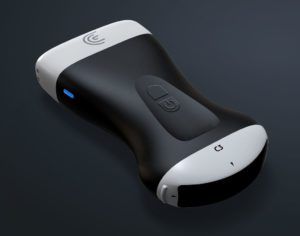By Dr. Oron Frenkel, Chairman, Clarius Medical Advisory Board
I recently had the pleasure of collaborating with pain management expert Dr. David Rosenblum on a webinar hosted by Clarius and summarized highlights from our discussion about interventional pain management in this article.
According to the CDC, one in five adults suffers from chronic pain. We all see patients who seek relief.

How to best manage a patient’s chronic pain is a topic that affects every single health care practitioner. It’s an international crisis that has become all the more acute during the COVID-19 pandemic. For example, across North America we’re seeing rises in the number of deaths due to opioid overdoses. Healthcare professionals are looking for alternatives to prescribing opiates for pain management.
One solution proven to be effective is interventional pain management procedures.
While many of us are not comfortable with complicated procedures, there is plenty of evidence that simple procedures, which many of us have been trained for, can bring patients significant, and often immediate, relief. These include trigger point injections, joint injections and simple nerve blocks.
First, take off the blindfold!
Inadvertently puncturing an artery or the pleura is more common than we would expect. Research indicate that even experts who spend their whole days injecting joints are missing the target up to one-third of the time.

You can maximize pain relief by injecting in the right place using ultrasound.
While we may have learned to do simple procedures based on anatomic landmarks, many bodies are not typical. Injections performed under ultrasound-guidance are proven to be more successful with real-time visualization of patient anatomy.
By using ultrasound to guide injections, you can ensure you’re getting medication to the right place. With expensive adjuncts like PRP and cartilage enhancers, accurate injections are more important than ever. Plus, you’ll improve safety by reducing unwanted side effects from medicine spreading where you don’t want it to go.
Here are 5 pro tips!
In our webinar presentations, Dr. David Rosenblum and I discussed some pro tips for successful pain management with ultrasound guided injections.
Tip 1 – Anesthetize the skin to decrease patient trauma.
Although some of us have been taught that a screaming patient is part of the procedure, simply using a local anesthetic on the skin prior to the procedure makes the experience painless for both you and the patient.
Tip 2 – Keep your screen in line-of-sight.
To avoid causing yourself harm, align your body with the screen so you don’t have to twist out of shape during the procedure. Using a handheld ultrasound, you can keep your screen close to the point of procedure so you can see what you’re aiming at right in front of you while staying comfortable.
Tip 3 – Match the prep to your procedure.
Make sure that you’re creating a clean and sterile environment for your procedure to minimize risk of complications. Handheld ultrasound scanners are easy to clean or encase in a sterile cover.

Tip 4 – Stabilize your hands against each other.
When you’re holding the ultrasound and you’re trying to visualize your needle in plane, it’s a good idea to stabilize your „needle“ hand against your „scanner“ hand to avoid moving too much. If you lose sight of your needle, jiggle it slightly in and out and look for distortions, then just scan laterally to find the needle tip. Avoid out-of-plane injections if you’re a beginner.
Tip 5 – Learn to be ambidextrous.
Practice working with both hands and working both sides of your brain so you’re comfortable with procedures from the left and right side. It will make you more efficient and effective on your journey to becoming a black belt in ultrasound-guided procedures.

To learn more about how Clarius HD is used to guide injections, visit our wireless ultrasound for pain management page. Or, watch the full recording of our recent webinar “Bullseye – Why Ultrasound is the Standard for Guiding Injections” featuring double black belt pain management expert Dr. Rosenblum, Director of Pain Medicine at the Maimonides Medical Center in New York.














